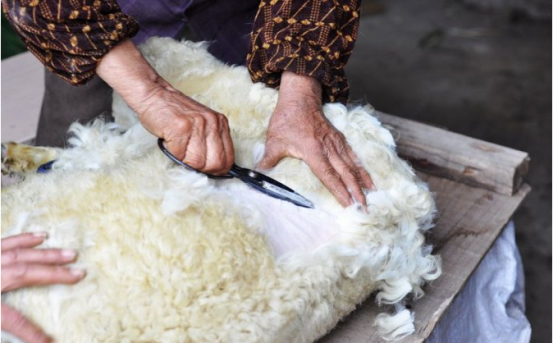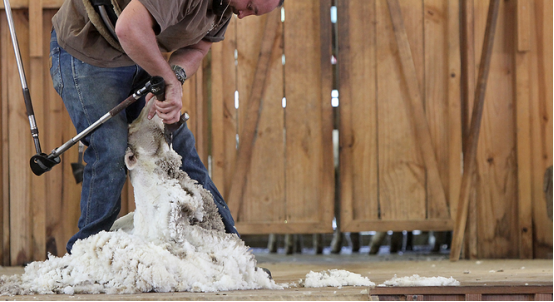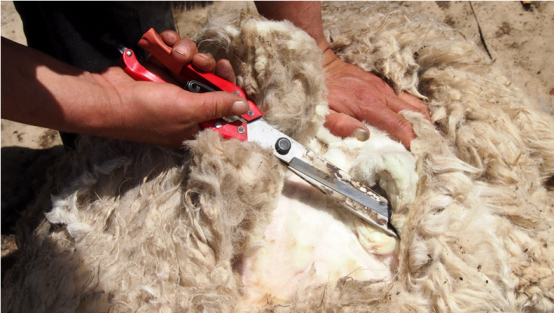Listening to a lot of farmed sheep is saying that the wool is not easy to cut, and when it is appropriate to cut the wool for the sheep, where to start cutting, the small farmers teacher gather these questions together and tell the farmers how to cut the wool. After all, how to cut is to pay attention to skills.
How long is the wool cut once?

The time and frequency of shearing should be determined according to the climate, variety, physiological characteristics and the quality of feeding and management. Generally, wool is cut twice a year, the first time is from April to May, and the second time is from September to October. Special attention should be paid to spring shearing. It is easy to cut the wool too early to make the sheep sick. If it is rainy, don't cut the hair. It is not good to cut the hair too late. The short hair can't protect the body from mosquito bites, making the sheep uneasy, affecting grazing and rest. When the length of the hair is less than 6 cm, the hair cannot be cut. Pregnancy sheep shearing is best done after childbirth to avoid premature birth.
How to cut wool?
When cutting wool, you can trim the wool with the help of wool shears. Before starting to cut the wool, first set the sheep to fall down, and the head is slightly higher. Never lower the height before the height. First cut straight from the thigh part, then cut it in parallel along this line, and cut all the hair of the head, then cut the hair on the back. After cutting, cut the opposite side of the hair. The cut hair is pointed inward, the roots are facing outwards, and the mountain is rolled forward into a bundle and stored in a human bag.
Motor shearing and manual shearing:
Motor shearing is suitable for farms and sheep farms with more sheep. The shearing speed is fast, the quality is good, the efficiency is high, and it can be 3~4 times of the hand shearing. Townships, villages and “two households†raise sheep more dispersed, using manual shearing.

The commonly used hand-cutting procedures are as follows:

Place the sheep to the left and down on the shearing table or mat. The sheep's back is close to the shearer and the abdomen is outward. The shearing person crouched behind the sheep, using the knees, gently pressing the shoulders and buttocks of the sheep, first cut straight from the right rear flank to the front flank of the stone, and then cut the foot and the lower abdomen in parallel with this line, and then Cut the right and left leg hairs. Then tilt the sheep slightly upwards, support the sheep's head with the left knee, and secure the sheep's head with the left hand, cut straight from the right shoulder to the right ear, and cut off the head and neck coat. Then the sheep is placed in a squat position. The person and the sheep are opposite each other. The sheep body is clamped into the knees. The left forearm has been cut through the midline of the back and cut from left to right. Finally, the right side of the sheep body is lying, and then the hair of the buttocks and the front and rear limbs are cut.
How to grab fluff?
Goat breeding fluff should be grabbed when changing hair. Spring is the season for all kinds of livestock to change hair. At this time, it is suitable for catching cashmere. The tool is very simple, just a wooden or metal stream. The pitch of the comb should be appropriate and the tip of the comb should not be too sharp. Generally, starting from the left side, from the front to the back, from top to bottom, repeatedly cross-grabbing. Do not get the cashmere caught, do not pollute or mix other impurities, should be classified and packaged, and kept safe.
After reading the shearing technology shared by the small farmers, did you learn a lot? Under this time, you can seize the opportunity and cut the sheep well. Huinong School has more relevant agricultural technology knowledge, and continues to pay attention to the Huinong School to answer questions during the breeding process.
Disclaimer: Some of the content and information in this article are from the Internet. This article is reproduced for the purpose of transmitting more information and learning. It does not mean endorsing its views or confirming the authenticity of its content. If the reprinted content involves copyright issues, please contact the administrator immediately, we will change or delete the relevant articles to protect your rights. This website does not make any commitment to the consequences of using the information and services on this website.
Biotechnology,Tebuthiuron,Trifloxystrobin,Flufenacet,Amicarbazone,Prothioconazole,Sulfentrazone
Changzhou Satidi Import and Export Co., Ltd. , https://www.guanjiejts.com